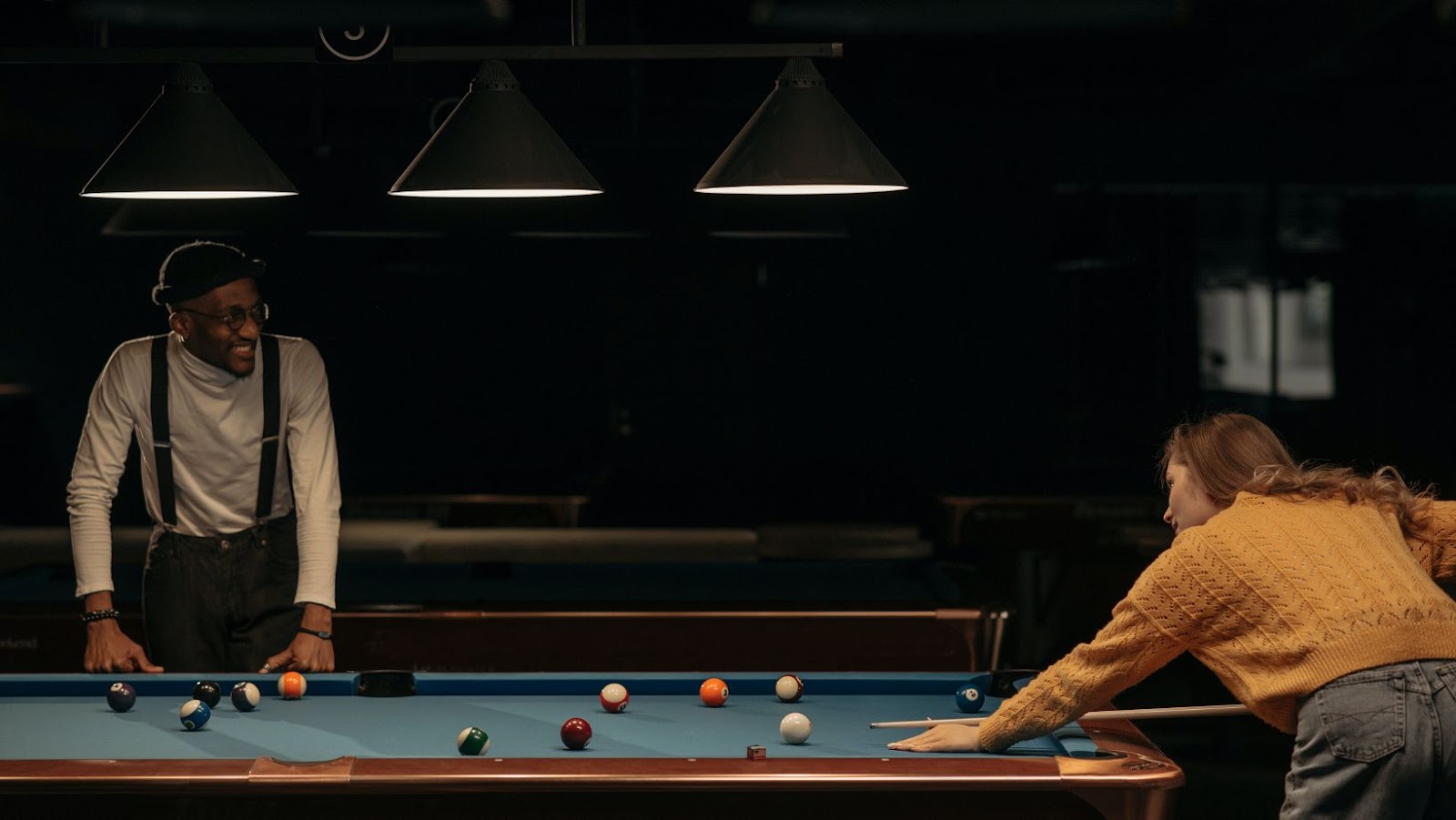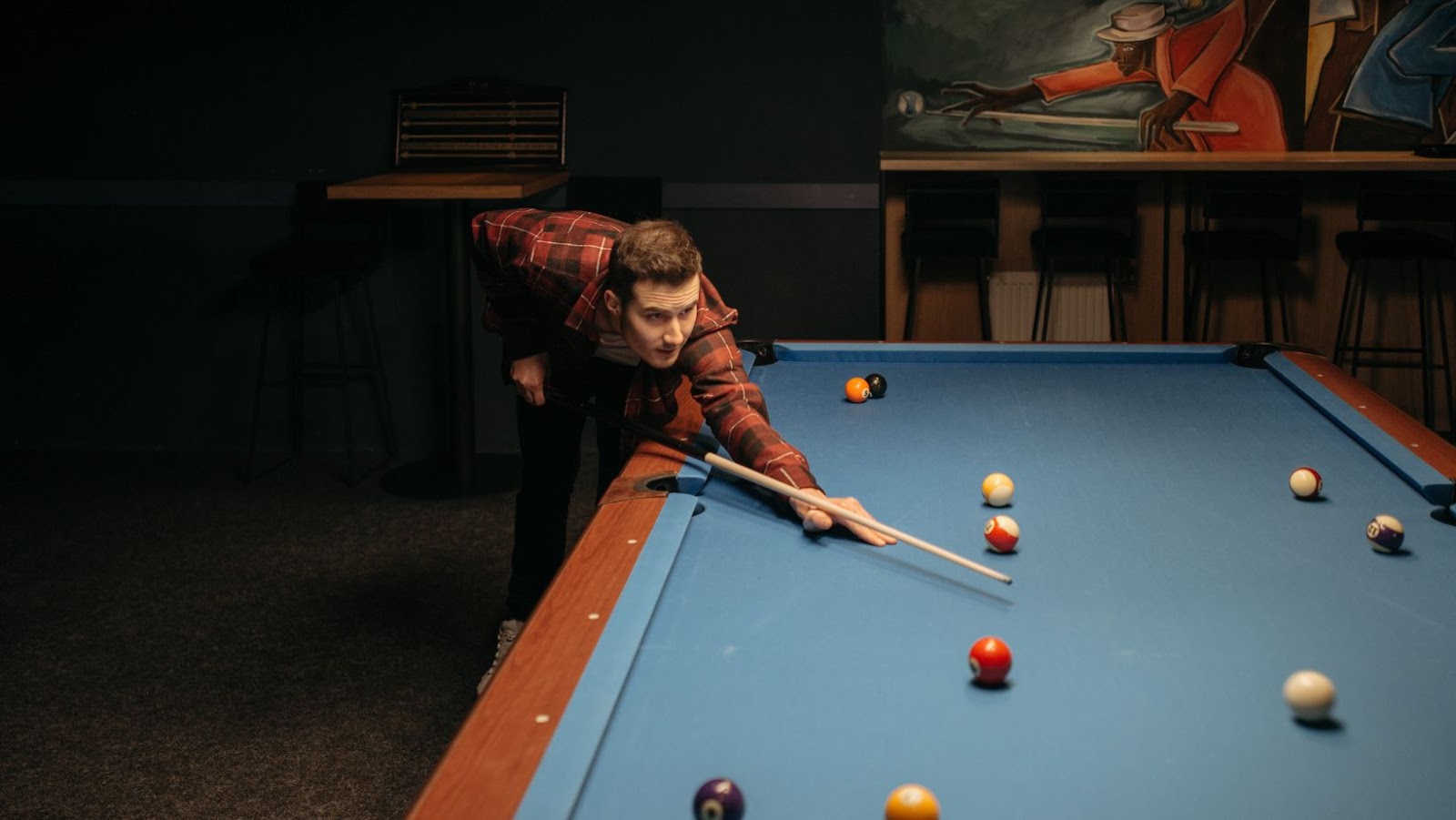Do you have trouble deciding whether to play billiards or pool? Confused by the countless differences between the two? This article will help you understand each game’s unique features and skillset, so you can choose the one that best suits your needs.
You’ll be playing like a pro in no time!
Billiards and pool are two of the most played cue sports worldwide, with a wide range of varieties in the game. Although related, they have various distinct features that set them apart. Billiards is a sport made up of individual games and tournaments while pool is based around pocketing balls into one of six pockets on a table. Billiards can be broken down into disciplines such as carom billiards, snooker and English billiards. Carom billiards is played with three balls on a single table often referred to as 3-cushion. It requires the players to use their cues to hit both their own cue ball and two other object balls on the same stroke in order to score points for each success hit. Snooker is similar to pool but has twenty two balls across one or more pockets within the confines of a snooker table that uses the colour coding system common in all its variants including six reds followed by five different colour balls known as yellows, greens, browns, blues, pink and blacks which are worth different amounts ranging from 5-7 points for reds , 6-10 points for colours building up to 15-20 points per black ball hit depending on if it was potted first or second et cetera.
In pool there are seven types of games; 8/9 Ball pool, Straight Pool (also known as 14/1 Continuous), One Pocket Pool, Bank Pool, SnookerPool (Snooky), Rotation and Three Cushion (Carom). Each style has its own distinctive ruleset which sets it apart from other variants with 8/9 Ball being most common amongst them having a simple objective of sinking all either 8 out or 9 chooseable object balls depending upon which variant you choose 8 or 9 ball. While straight pool requires each player’s cue ball to hit any valid object ball in each turn before eventually clearing all balls from the table within certain shots leading down till 0 under general ruleset value being pre defined at 100 before start by players mutually agreed upon.
Billiard vs Pool
Both billiards and pool are popular cue sports that involve players striking a cue ball with a cue stick, so it can hit one or more object balls. The object of each game is to pocket the balls in the correct order by striking them with the cue ball. While billiards and pool share similar characteristics, there are subtle differences between the two games that make them distinctly separate. The main difference between billiards and pool is found in their regulations; specifically, who gets to shoot when, how the game unfolds and what type of equipment is used.
Billiard Regulations: Billiard games include several variations played on six pocket tables including snooker, English billiards and Russian pyramid. Unless playing a team-based variation like snooker, players take alternate turns shooting at balls on a felt table covered with cloth—generally green in color—until all of their own balls have been pocketed. Generally no part of the player’s body may touch any part of the table except for their hands holding a cane-shaped cue stick during shots.

Pool Regulations: Pool games like 8-ball and 9-ball require shots to be taken in specific sequence according to rules laid out by organizations like World Pool Billiard Association (WPA), which also dictates minimum table sizes for competition play. A felt cloth covering is also required on all 7-, 8-, 9-, 10-, 11-and 12-ball tables; but unlike many billiard games this cloth may be blue, red or purple instead of green. In these types of pool games, each player must have at least one foot touching the floor while taking his/her shot as well as hit at least one ball with toe hard stick (has no jointed segments) before pocketing an object ball into one of six pockets on the lower half or rail side of table before play switches over to next person or team.
History of Billiards And Pool
Billiards and pool are two popular cue sports that have been enjoyed by millions of people for centuries. While billiards has remained largely the same game since its invention in the 15th century, the game of pool has undergone many changes over the years. Understanding the history of billiards and pool is key to understanding why these two games are so distinct from each other. Billiards is one of the oldest cue sports, originating in 15th century France and England. The original game was very different than modern day, featuring only three balls and an end-rail cushion. Nowadays, it includes 22 balls (16 numbered object balls, 4 “cue” balls, and 2 special “jacks” or “buttons”). Over time, French carom billiard tables evolved into English-style pocket tables where players could attempt to pocket their opponents’ object ball or specific designated balls in order to score points. Pool as we know it today began around 1820 when John Willie Dunn created a table with a sloping top surface that led to holes on four sides surrounded by rubber cushions lining all four sides with “pocket mouths” in the corners and center of each side. This design incorporated rails running along all four sides connecting with gutters that return all pocketed balls back up onto the playing surface. It gave players plenty of area for shot making as well as room for innovation, leading to an entirely new type of game using a wide variety of custom cue sticks and rulesets. Today’s modern pool encompasses variations like pocket billiards (8-ball, 9-ball, 10-ball), straights (14-1 continuous), hectic faro banks (capabletonko etc.) carom (3 cushion), snooker and more!
Popularity of Billiards And Pool
There is a lot of confusion between the terms billiards and pool, but the two games are actually quite different. Though they share many similarities, they differ in rules, equipment and popularity. Billiards is the umbrella term for a variety of cue sports played on tables with no pockets. Games like snooker and carom are types of billiards that focus less on sinking balls into pockets, instead relying more heavily on strategy and finesse. On the other hand, pool is played on tables that do contain pockets; eight-ball and nine-ball are among the most popular varieties. There’s a wider variety of obstacles players can use compared to billiards – racking triangles, 9-ball diamond racks, clothes hangers for spatial orientation practice – as well as a tremendous range among skill levels from novice to advanced professional.

Though both sports have been around for centuries, it wasn’t until 1878 when Englishman John Thurston patented the first billiard table that featured an internal wedge rail system forming pockets – making pocket billiards an official game in itself. As its popularity grew throughout Europe and North America these pocketed tables became better known as “pool” tables – solidifying their two separate identities for years to come.
Strategies For Playing Billiards And Pool
Whether you’re playing billiards or pool, there are basic strategies that should be employed in order to maximize your chances of success. Before making a shot decide on which ball you will target and determine its location relative to the pocket you plan to send it into. If you can, visualize hitting the target ball with enough force to push the cue ball forward and drive it into the pocket. When planning a shot, take into consideration where other balls around the table are. You want to choose a shot that is likely to create more opportunities for further shots in future moves and avoid leaving your opponent in an advantageous position. Employing good “English” (the spin put on the cue ball as it strikes another ball) can help manipulate balls across the table by deflecting them in different directions after contact with either your target balls or obstacles such as rails around the perimeter of the table; this could help set up future shots.
In billiards there is no requirement that a certain type of ball needs to be hit first so attempting combination shots (sliding off one ball while driving another into a pocket) is always an option when no simple shot presents itself. On most shots if you feel confident doing so, use both hands on your cue; this will help ensure accuracy and allow for greater power if desired. In pool, most shots require one kind of ball (striped or solid colored) to be hit first followed by sinking any remaining object balls but creativity and practice are still valuable assets here as well; trying advanced techniques such as “shape drawing” can often result in quality potting opportunities being created from something seemingly simple: placing an object ball between two rails acting as guides for deflection towards a waiting pocket – shapes may not load themselves for you but having trained yourself with practice drills could prove beneficial when applied correctly during game play!
In conclusion, the terms pool and billiards are often used interchangeably to refer to the same activities. In reality, billiards is a broader term that encompasses different games more specific in their rules such as eight-ball, nine-ball and snooker. Pool is a game of pocket billiards, which falls under the umbrella category of billiards.
Although their rules may vary slightly depending on their regional or national variations, all share common features related to shooting pockets with cue sticks and object balls.
